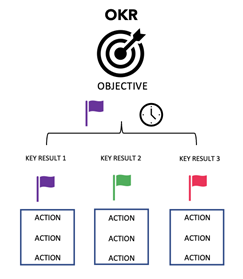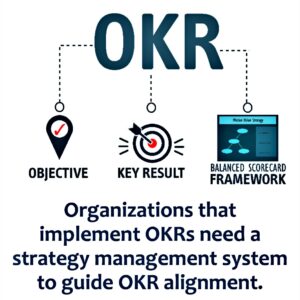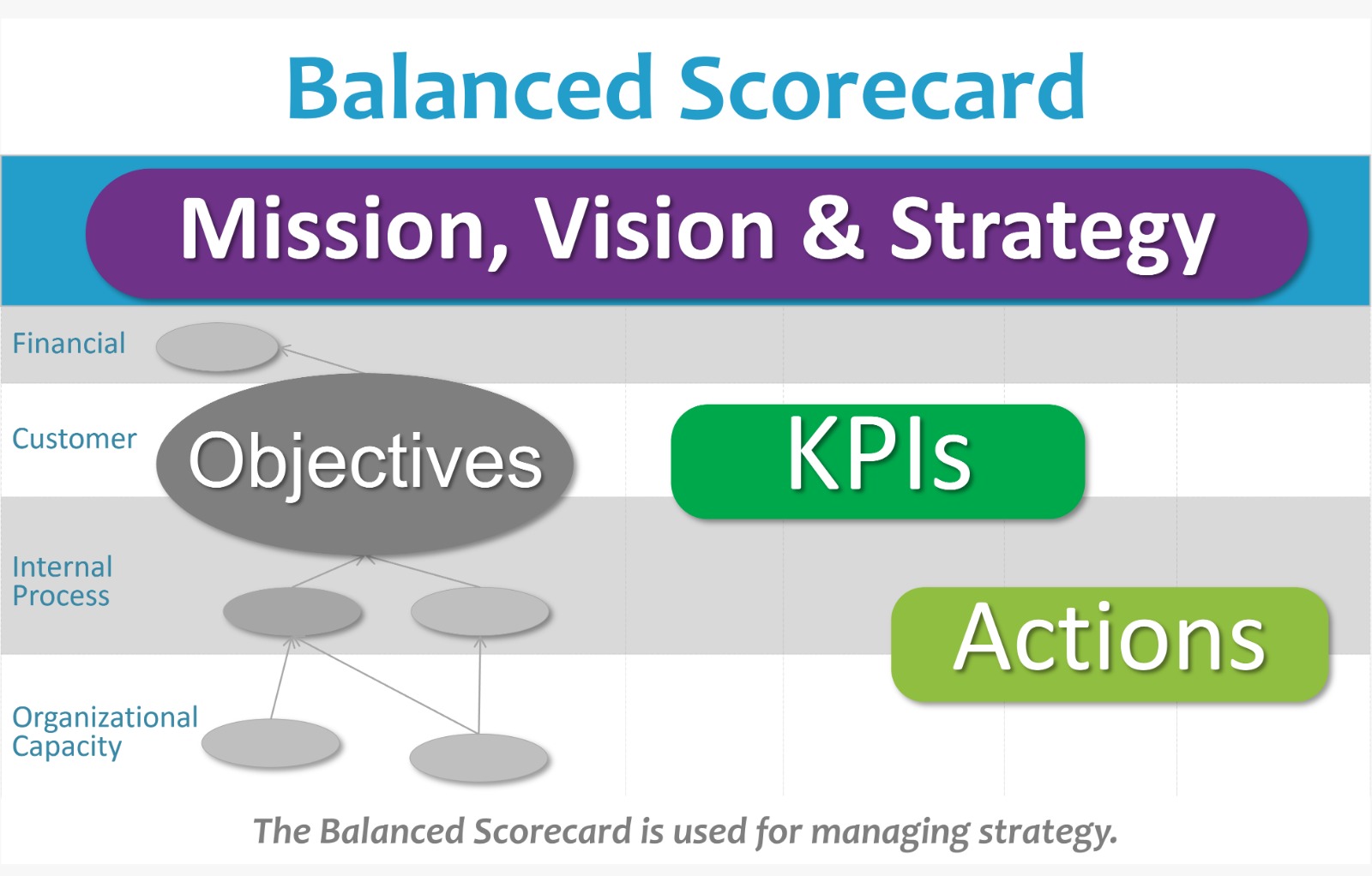OKR & BALANCED SCORECARD IMPLEMENTATION
OKR is a proven System for the successful implementation of Strategy with Quarterly Objectives
ProConScaleX co-works with Management Teams to:
- Turnaround Loss-making Businesses
- Restructure for Large-scale Growth
- Attract Growth Capital
- Prepare for M&As and Joint Ventures
As "Business Process Implementation Specialists", we validate business restoration and growth strategies. We engage with futuristic Business Leaders and their Teams to ...
- Enhance Investment and Business Outcomes
- Scale Sustainable Leadership Growth


Pic Ref: https://balancedscorecard.org/bsc-basics/articles-videos/webinar-using-balanced-scorecard-with-okrs/
BALANCED SCORECARD IMPLEMENTATION
- How is the BSC used to implement Strategy in an Organization
The Balanced Scorecard is a management tool that helps organizations align business activities to their vision and strategy. It provides a holistic view of an organization’s performance by measuring progress across (at least) four perspectives:
- Financial
- Customer
- Internal processes, and
- Learning and growth
To use the Balanced Scorecard to implement strategy, an organization first needs to define its vision and strategy. This includes identifying its goals, objectives, and the strategies it will use to achieve them. Once the vision and strategy have been defined, the organization can then use the Balanced Scorecard to translate this into specific performance measures and targets for each of the four perspectives.
For example, an organization that is focused on improving customer satisfaction might set targets for increasing customer loyalty, reducing customer complaints, and increasing customer retention. To achieve these targets, the organization might implement strategies such as improving the quality of its products or services, streamlining its processes, and investing in employee training and development.
The Balanced Scorecard provides a framework for tracking progress towards these goals and objectives, and for identifying areas where additional resources or effort may be needed to achieve them. It can also help an organization identify potential trade-offs between different areas of the business, and make informed decisions about how to allocate resources in a way that aligns with its overall strategy.

